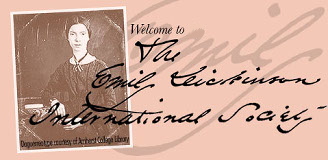Tone of It-ness: Experience and Citizenship in Emily Dickinson
Mary Kim, Stanford University
Emily Dickinson’s oeuvre has often been singled out for its remarkably wild shifts in tone, from vehement to quiescent, wondrous to cynical, menacing to impish. If citizenship in the narrower, juridical sense seems an incongruous subject to read into her poetry, perhaps tone, agreeable to lyrical analysis but also “conducive to the analysis of ideology” (Ngai 43), may act as a timely go-between. I use the term “tone of it-ness” to avoid the general critical tendency to dichotomize Dickinson’s tone as either sincere or ironic, and to suggest that closer attention to the aesthetic-affective shades of her lyrics reveals how her poetry is informed by the interdependence of material embodiment and formal abstraction, passivity and engagement, amnesiac processes and lived memories—all the discursive structures of 19th-century American citizenship that circumscribe and circulate through daily life.
Dickinson does not programmatically reject political incorporation. On the contrary, there is clearly a sense in which the poet desires and wills legitimation by power, or an authoritative affirmation marked by “consistency and intensity of affect” (Wilkkowitz); in the poet’s words, “Circumference without Relief-- / Or Estimate—or End—” (J 943). We find, however, just as many instances in which tonal consistency and intensity are not so much absent as that they seem to be the wrong descriptors to invoke. Such moments are most often glimpsed either in the narrative-heavy, ballad-like poems, or the brief, aphoristic arabesques that are concentrated towards the higher numbers in her oeuvre. This cluster of “minor poems” is often characterized by either a hyper-factual banality, or a sense of interrupted latency, as if the too-cramped space of the poem allows insufficient scope for any transmission or discharge of feeling. Such poems would seem to approach an “it-ness,” as they fail to develop any sense of reflexive interiority. As an illustrative analogy, compare “it” with “this”: against the recognizing and pinpointing functions of a “this,” the non-cathartic, deprivileged, and entirely stock connotations of an “it” emerge. What seems to produce this tone of it-ness in Dickinson is twofold: “it” dislocates the self, but “it” also prepares for moments of electric identification, as in the phrase, “it was you.” This suspension of agency that “it” creates, then, both mimics the endless deferrals of political validation that the poet faced, but in its very withholding produces a strangely powerful illocutionary force.
